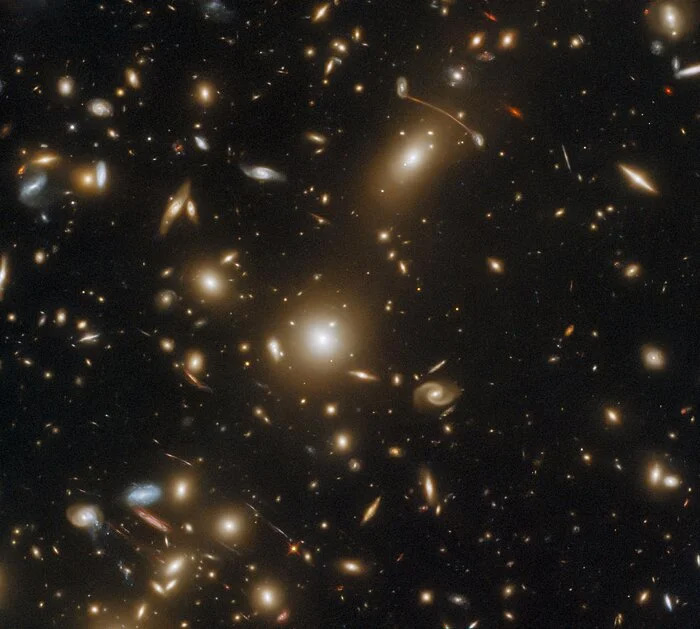Cluster of galaxies so large that it can skew space-time and bend light
In the field of space-astronomy There is nothing more difficult than generalizing the true scale of the universe. Practically speaking, just imagining the size of the entire solar system is a huge problem, let alone the entire Milky Way or the universe at large.
Our galaxy is just one of billions of galaxies in the universe. In fact, galaxies not only exist in isolated, isolated forms, but also frequently interact with each other - and sometimes they even aggregate into large groups, known as galaxy clusters. The Hubble Space Telescope recently sent back to Earth an incredible image of such a galaxy cluster.
Called Abell 1351, this is an extremely large galaxy cluster, located in the constellation Ursa Major. Clusters of these galaxies are usually groups of thousands of galaxies held together by gravity, their estimated masses being four billion times the mass of the sun. The latest observations from the Hubble Space Telescope reveal the effects a large-scale galaxy cluster can have on space-time.

The massive galaxy cluster Abell 1351 was captured by the Hubble Space Telescope's Wide Field Camera 3. This cluster of galaxies is located in the constellation Ursa Major in the northern hemisphere.
From the image above, it is easy to see that the slightly distorted light trails are images of distant galaxies. Because the cluster's mass is so great, it skews space-time just enough for the light passing through it to bend and spread out, like a magnifying glass. This is called gravitational lensing, and it allows researchers to observe objects (such as galaxies) at a distance beyond what is normally observed.
There are different degrees of gravitational lensing, depending on the mass of the object acting as the lens. If the lens is large enough and the light source is close by, it will bend the light so much that you can see many different images (illusions) of the same light source. That is called a strong gravitational lens. There is also another, more rare effect called weak gravitational lensing, where a lens with a smaller mass or a distant light source, can stretch the light source and make it appear larger or larger. other shape.
Not stopping there, there is also an effect called microlensing, which is used to detect exoplanets. In this, light from a distant object (in this case, a star) appears brighter due to the object in front of it (the exoplanet).
Both strong and weak microlensing are caused by Abell 1351, and this cluster is of particular interest to researchers. The first goal will be to determine the cluster's mass, before moving on to more in-depth observations.
You should read it
- Admire the latest Hubble masterpiece
- Admire the image of the strange jellyfish galaxy through the eyes of the Hubble telescope
- Admire the special image of galaxy NGC 3175 taken with the Hubble space telescope
- The day you were born, is there anything special about space? NASA will help you observe with Hubble
- Hubble begins its hunt for hard-to-identify medium-sized black holes
- Shocking discovery in astronomy: 3 supermassive black holes in the same galaxy
 4 websites to help see where the ISS station is in the sky
4 websites to help see where the ISS station is in the sky Is the 9th planet in the solar system 10 times the size of Earth?
Is the 9th planet in the solar system 10 times the size of Earth? The Most Powerful Space Telescope Ever Built Will Look Back In Time To The Dark Ages Of The Universe
The Most Powerful Space Telescope Ever Built Will Look Back In Time To The Dark Ages Of The Universe Solar Storm is making landfall on Earth
Solar Storm is making landfall on Earth A meteor with a speed of 32,000 km / h is approaching Earth's orbit
A meteor with a speed of 32,000 km / h is approaching Earth's orbit The most beautiful meteor shower of the year and amazing astronomical phenomena in August
The most beautiful meteor shower of the year and amazing astronomical phenomena in August